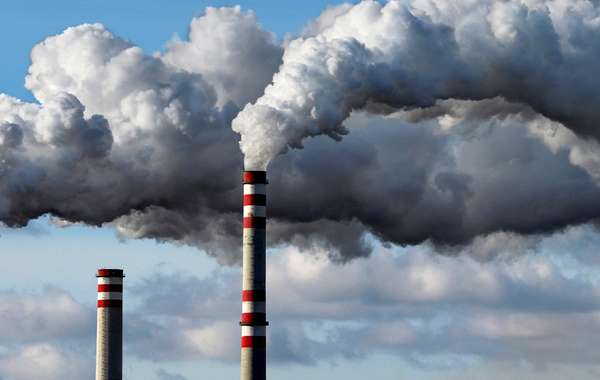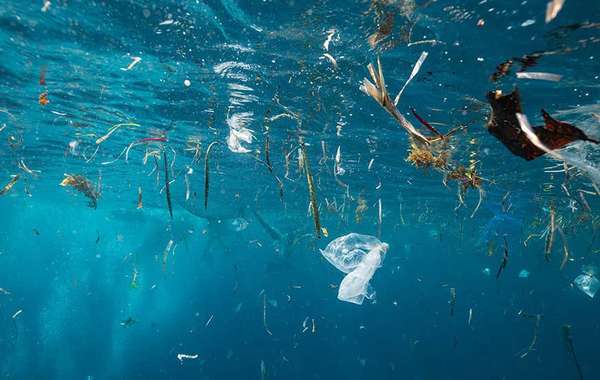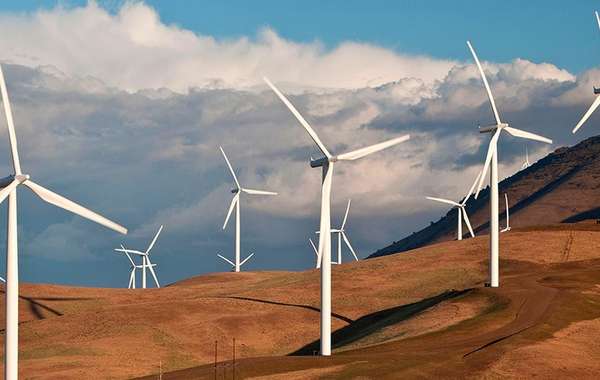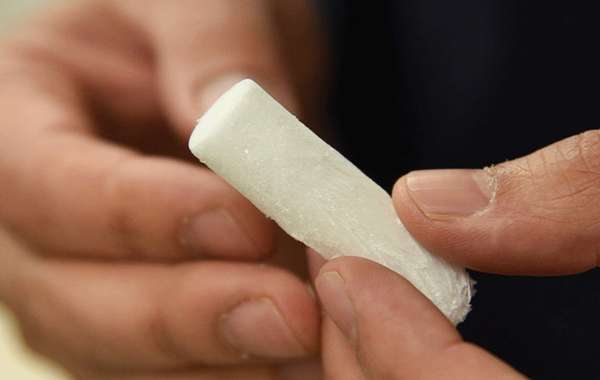Here at ecohome.net we’re all about promoting Better Construction with a helpful focus on the step-by-step “How To” of Designing, Specifying, Building or Renovating Sustainable, Healthy Homes. Mike here even wrote an article on Earthships "back in the day", a trend started in the 70's, (see "Do Earthships work in cold climates?" for more info and his conclusions!)
When it was the 50th Anniversary of Earth Day on April 22nd 2020, and with the renewed Media interest in "The Environment" we're going to call "The Greta Effect," we decided to see what Earth Day is really all about, what prompted it to happen, what it's achieved in those 50 years… And MOST Importantly, what can we all do to Help the planet we're leaving for our Children...
Firstly, we discovered that we echo The Earth Network’s sentiments, so we decided to quote them! “The biggest lesson from the first Earth Day: When we come together, the impact can be monumental. Go green with us by making small changes that add up to making a big difference. Commit to earth-friendly acts, make more sustainable choices, reduce your carbon footprint, conserve energy and resources, collaborate on environmental projects in your community, vote for leaders committed to protect us and the environment, and share your acts of green to help educate and inspire others to join our movement! Start protecting our environment today and help us create a healthy, more sustainable future” [1].
Few would argue that we’ve come a long way in 50 years, but many would say we’ve also come closer to the edge, so in this retrospective of the 50th Anniversary of Earth Day, on the 22nd of April 2020, which took place online (see links here) we decided to take a look back at the origins of Earth Day, and the beginnings of the Ecological or Green Movement in North America as being the Foundations of where we’re at Today. Then we’ll give our view of how to shape the sustainable future of Planet Earth, how to save the Human Species and while we're at it all the other Flaura and Fauna essential for our survival… (and then probably go for a beer or two, because that much passion is thirsty work!)
The First Earth Day April 22nd, 1970 – The History
First off let’s get one thing straight. Technically speaking every 22nd of April we’re celebrating the Anniversary of Earth Day and not the actual Birthday of the US Environmental Movement as “A Thing.” Let’s then consider it more of a Coming of Age created by Earth Day itself taking place and the events surrounding it…
Or as Dr. Lewis Perelman, internationally recognized thought leader put it in his 1976 book The Global Mind: Beyond the Limits to Growth (New York: Mason/Charter)
“The important thing to understand about Earth Day is that it was not the celebration of the birth or maturation of the environmental movement in the United States, in the sense that the first Fourth of July was the celebration of the birth of a nation. It wasn’t the environmental movement that created Earth Day, but vice versa. The old conservation movement had historical roots that went back more than a hundred years. The groups and organizations that would be identified with the environmental movement after Earth Day — the Sierra Club, Friends of the Earth, ZPG, and so forth — all existed before. Yet there was no environmental movement in the United States before Earth Day or even on Earth Day. It was only after Earth Day that the movement began.” [2]
Environmental Rights Day, January 28, 1970 - Sic Parvis Magna
Santa Barbara celebrated Environmental Rights Day on January 28, 1970, the first anniversary of the disasterous oil blowout that paralysed the Santa Barbara coastline in 1969 and turned California into a hotbed of Environmental activists [2b]. The Declaration of Environmental Rights, created by Rod Nash, was read from the podium, and the same people who organized this event became instrumental in the creation of the National Environmental Policy Act.
Hayes said this was the first giant crowd he spoke to that "felt passionately, I mean really passionately, about environmental issues," and that it was there he realized this might be the beginning of a movement. [2c]
The popularity and energy of Environmental Rights Day inspired then-Sen. Gaylord Nelson of Wisconsin to organize what came to be known as "Earth Day" on April 22, 1970, when he mobilized around 20 million people in two thousand colleges and universities, roughly ten thousand primary and secondary schools, and hundreds of communities across the United States to the cause of educating people on environmental issues with the help of Denis Hayes, the organizer of the first Earth Day, and U.S. Rep. Pete McCloskey of California.

The first Earth Day on April 22nd 1970, dawned as a typically sunny day in Los Angeles, where at one meeting point Environment Apostles speaking to a 60’s Hippy audience bashed on about the impending Ecological Apocalypse in the hope of stirring Apathy into Action. “The vibe” started to change though (and stuff got serious) as a Native American Hopi medicine man began incantations to the Great Spirit, and “The White Invaders” in the audience were congratulated for having finally begun to understand what America's Indigenous people had always known…
“From the realms of the human world, the sky dwellers, the water beings, forest creatures and all other forms of life, the beautiful Mother Earth gives birth to, nurtures and sustains all life. Mother Earth provides us with our food and clean water sources. She bestows us with materials for our homes, clothes and tools. She provides all life with raw materials for our industry, ingenuity and progress. She is the basis of who we are as “real human beings” that include our languages, our cultures, our knowledge and wisdom to know how to conduct ourselves in a good way. If we listen from the place of connection to the Spirit That Lives in All Things, Mother Earth teaches what we need to know to take care of her and all her children. All are provided by our mother, the Earth… economic initiatives can be both profitable and sustainable for future generations. First Nation traditional knowledge has provided our people with the tools to care for Mother Earth and our sacred sites. This knowledge can be shared with industry for the betterment and survival of all peoples.” [3]
Perhaps this was the spiritual beginning of “The Ecology Gods” getting the message and of bringing the minority, almost marginal subject of “The Environment” into the public consciousness by an unexpected means… because despite Earth Day's origins being credited to Rod Nash, Marc McGinnes, Congressman Pete McCloskey (R-CA), Senator Alan Cranston, Paul Ehrlich, David Brower, Denis Hayes and Senator Gaylord Nelson, on this first Earth Day it was actually the influential CBS TV News anchor Walter Cronkite, cited as "the most trusted man in America" who cranked up America’s eco-conscious volume with the headline
“Can The World Be Saved?”.
Cronkite, who by all accounts was the kind of guy who occasionally liked OK sauce on his lettuce, had jumped onboard the radical but fledgling environmental movement wholeheartedly in 1969 after covering the oil-spill, stating
“God damn it, we’ve got to get on this environmental story!”
As historian Douglas Brinkley put it: “Now that Neil Armstrong had walked on the Moon, Cronkite sensed that ecology would soon replace space exploration as the national obsession.” And how right it turns out Cronkite was (even if some would say the ball is only just starting to roll).
Walter Cronkite – An Environmentalist Before His Time – the build up to Earth Day 1970
But let’s rewind, if Earth Day isn’t really the Environmental Movement’s Birthday, how did we come to think it was?

As recognized by the University of Texas in Austin in dedicating the plaza in front of the Jesse H. Jones Communication Complex in 2014 to him, Walter Cronkite - CBS News anchorman (1962-1981) may have been the Key. He was already “Environmentally Aware” before his coverage of Earth Day on April 22nd, 1970, as since he learned to sail in Galveston Bay Tx, Cronkite had been advocating the conservation of rivers, lakes, bays, and seas. The Atlantic Ocean whales – Humpbacks, Minkes and North Atlantic Right whales – had by the late 1960s become his “Lighthouse” species.
In a parallel to today’s world of overwhelming electronic news sources, Cronkite was disturbed by the globe's ecological calamities that his career meant he was constantly reminded of. Because of this heightened Environmental awareness Cronkite kept the epic framed photo, Earthrise, taken by Apollo 8 astronaut Bill Anders in late December 1968 behind his desk, as a reminder of what he saw as “The Earth’s Fragility”.

Earthrise – as taken by Apollo 8 astronaut Bill Anders depicting “The Earth’s Fragility”
Whilst Apollo 11 dominated news coverage in 1969, Cronkite significantly orchestrated CBS Reports investigating two environmental catastrophes that year: the January blowout of a Union Oil offshore well near Santa Barbara which dumped over 3 million barrels of crude oil into southern California waters, and the June Cuyahoga River fire in Ohio, during which oil-soaked debris torched a railroad bridge. Perhaps prophetically, Cronkite’s perception was that fossil fuel driven industrialization spelled doom for mankind. "The North American continent seemed ringed by oil slicks," Cronkite lamented, "off Alaska, off Nova Scotia, off Florida, and most dramatically, in the Gulf Coast off Louisiana."
A radical opinion for 50 years ago!
Earth Day 1970 – The news coverage that started “The Environmentalist Movement” in America
In homage to Napoleon Bonaparte, who said "A good sketch is better than a long speech" (French: Un bon croquis vaut mieux qu'un long discours) to dramatize their coverage of Earth Day April 22nd, 1970, and capture the imagination of the US viewers by what were then shock-tactics, CBS News Producer Ron Bonn created a backdrop consisting of the legendary photograph the astronauts of Apollo 8 took of planet earth, with his hand placed in front of the photo clutching the globe.

“We were trying to show humanity squeezing the Earth to death,” according to Bonn, so he also added the prominent question “Can the Earth Be Saved?”
With one striking (if unfortunately nicknamed [4]) image of the Earth photographed from space on Prime Time TV, “The Environment” suddenly become a household word in America prompting an entire electronically synthesized movement as the ecological crisis was universally acknowledged as “Real.”
50 Years on from the first Earth Day – What Environmental Progress Have We Made?
In the last 50 years across the US and Canada the Native Americans have maintained a stoic stance towards “The White Invaders” or more precisely their Industries, environmentally speaking.
With the Standing Rock protest against the Dakota Access pipeline, The Two Rivers camp, protesting the Trans-Pecos pipeline, The Bad River Band of the Lake Superior Tribe of Chippewa Indians in northern Wisconsin opposition to Enbridge line 5, the Confederated Salish and Kootenai Tribes of Montana battle with Yellowstone Pipeline Co over the Flathead Indian Reservation pipeline, the Trans Pecos Gas pipeline, the Enbridge's Line 3 pipeline from Hardisty, Alberta to Superior, WI and Canada’s own Trans Mountain Pipeline controversy amongst others, Indigenous peoples across North America have often lead the way to adopt sustainable environmental choices over the capitalist model of chasing a dollar at any cost.
Thankfully, after 20 million Americans participated in the first Earth Day, far-reaching laws that had been unthinkable in 1969 became unstoppable by the end of 1970 and were implemented in the following years.
Those laws in the US included the Clean Air Act, the Clean Water Act, the Endangered Species Act, the Marine Mammal Protection Act and the Safe Drinking Water Act.
The US though can’t be considered in isolation. We’re here after all to “Save the Planet!”, so whilst there are many individual examples from around the globe, we need to look at collective action, such as The Kyoto Protocol, an international treaty which extended the 1992 United Nations Framework Convention on Climate Change (UNFCCC) that committed state parties to reduce greenhouse gas emissions in a marked change from just considering “simple” mechanical pollution such as oil spills or heavy metals in drinking water to be “The Problem”.
The Kyoto Protocol was adopted in Kyoto, Japan on 11 December 1997 and the culmination of this Environmental activity, uniting the world in a reduction of environmental impact caused by climate change, was The Paris Agreement of 2016 [6].
The Paris Agreement – Earth Day 22nd of April 2016 – The World Unites for Climate Change
To much fanfare, the 22nd of April Earth Day 2016 saw the ceremony at the UN Headquarters in New York of the opening for signature of The Paris Agreement.

The Paris Agreement is an agreement within the UNFCCC, specifically dealing with greenhouse-gas-emissions mitigation, adaptation, and finance. In a shift acknowledging the potential threat to our Species that is Climate Change, (and all other species whilst we’re at it,) The Paris Agreement's stated long-term objective is to keep the increase in global average temperature to below 2°C above pre-industrial levels; and to limit the increase to 1.5°C, since this figure was agreed would substantially reduce the risks and effects of climate change. The Paris Agreement obliges each member country to determine, plan, and regularly report on the contribution that it undertakes to mitigate cumulative global warming.
As it would be arguably impossible to enforce such an Agreement across political borders around the Earth, there is no obligation in The Paris Agreement to set a specific target by a specific date, but on the weight of collective scientific evidence it was agreed that each target should go beyond previously set targets in the interests of progress.
The Paris Agreement went into effect on November 4th, 2016 and as of February 2019, 194 states and the European Union had signed the Paris Agreement. 184 states and the EU, representing more than 87% of global greenhouse gas emissions ratified or acceded to the Agreement, including China, the United States and India, the countries with three of the four largest greenhouse gas emissions of the UNFCC members total (about 42% together).
All was good in the world! Progress was being made, to reply to the original Earth Day question of “Can the Earth Be Saved?” the Paris Agreement looked like an emphatic step in the right direction of saying “Yes!”
So, The Earth is Saved, All is Good in the World and Environmentalists can Relax?
I’m an optimist, so “Yes” there has been some progress for sure, but as opinions vary and the financial interests of many intervene, obstacles to saving the planet certainly remain. (So ‘erm, to be pragmatic that would be a “NO!”) Also, Environmentalists have come to the grim realization that it really isn’t a question of “Saving the Planet” – it’s actually a matter of “Saving a Species” – the species in question being Humanity itself.
Earth as a planet will recycle, it will remain despite anything we Humans throw at it. After all, however ingenious we are, we’re not producing anything new, it already exists on this planet in one form or another, we’re as a species moving things around, disrupting eco-systems, polluting oceans with carelessly discarded plastics, supporting unsustainability by poor consumer choices ably abetted by pillaging industrial conglomerates and their powerful lobbying. However, we must bear in mind that “more than 90 percent of all organisms that have ever lived on Earth are extinct” [7a] and that there have already been 5 Mass extinctions on planet Earth, and yet the Earth is (thankfully) still here!
Time for a couple of shocking statements to illustrate the point about why Scientists are worried:
Humans “have driven the rate of biological extinction, the permanent loss of species, up several hundred times beyond its historical levels, and are threatened with the loss of a majority of all species by the end of the 21st century.” [7b] Peter Raven, former president of the American Association for the Advancement of Science (AAAS)
In relation to Pollinators, which are necessary for 75% of food crops, these “have declined at an annual rate of 2.5% over the last 25-30 years. The most severe effects may include Puerto Rico, where insect ground fall has declined by 98% in the previous 35 years. Butterflies and moths are experiencing some of the most severe effects. Butterfly species have declined by 58% on farmland in England. In the last ten years, 40% of insect species and 22% of mammal species have disappeared. Germany is experiencing a 75% decline. Climate change and agriculture are believed to be the most significant contributors to the change.” [8] Dave Goulson characterized the situation as an approaching "Ecological Armageddon", adding that "if we lose the insects then everything is going to collapse."[9] “As of 2019, 40% of insect species are in decline, and a third are endangered.”

The difference this time being that the Human Race are a significant factor in driving the Holocene extinction, otherwise referred to as the Sixth extinction or Anthropocene extinction, with species die off at 100 times “normal” rates for these events. [11a]
But I digress, back to Climate control…
Despite all that, The Paris Agreement does not specify provisions for noncompliance, (what I will call penalties). Yet on August 4, 2017, the Trump administration delivered an official notice to the United Nations that the U.S. intends to withdraw from the Paris Agreement as soon as it is legally eligible to do so, which in accordance with Article 28 is November 4th, 2019.
The reasons behind this climate U-Turn yet again point to profits, as President Donald J. Trump has cited that the global deal to cut back carbon emissions “would kill jobs and impose onerous regulations on the U.S. economy” … The US is rated “Critically Insufficient” by Climate Action Tracker [11b], saying “The Trump Administration has spent 2018 systematically gutting US federal climate policy.” [12]
Thankfully, the US reacted on a State level with the formation of The United States Climate Alliance. As of March 12, 2019, the 22 members of the Alliance make up 50% of the U.S. population and over 50% of U.S. GDP as of 2016… It shows a significant and encouraging level of support for Climate Change action across the US.
In another example from Canada of Environmental Progress being halted by Industrial Profits, there is the Trans Mountain Pipeline Project in Vancouver – which is proposed to bring “diluted bitumen” or dilbit from Alberta for distribution to world markets. Up to 890,000 barrels per day and 400 oil tankers a year, or a 1350% increase to be precise [10].

In the face of mounting opposition, particularly from environmentalists and First Nations groups as the proposed pipeline would ship diluted bitumen through the Strait of Juan de Fuca in BC, an extremely sensitive environmental region, in May 2018, the Canadian federal government announced its intent to buy the pipeline from Kinder Morgan for $4.5 billion and seek outside investors to complete the expansion (who would also be indemnified for any delays induced by provincial or municipal governments).
In August 2018, on the same day that Kinder Morgan shareholders approved the sale, a game-changing court decision was made by the Federal Court of Appeal, who overturned the NEB's original approval of the pipeline expansion, citing that the government did not sufficiently consult First Nations groups and assess its environmental impact. However, in a move apparently designed to build the Trans Mountain Pipeline expansion “at all cost”, The Canadian government has since initiated and extended Phase III consultations with Indigenous groups impacted by the pipeline, [14] however the wording of the government website would strongly suggest that the decision to build the pipeline has already been taken and the Canadian Government could be considered to be “going through the motions.” For example:
“The Governor-in-Council will consider a recommendation on whether to approve the project once it is satisfied that:
- the Crown has adequately fulfilled its duty to consult
- consultations with potentially impacted groups have been offered and/or carried out in a meaningful and responsive manner
- reasonable accommodations have been considered, where appropriate, and responses have been provided to Indigenous groups”
Unfortunately, in our interpretation, there’s nothing there to say that legitimate and proven reasons for NOT building the pipeline against First Nations wishes might stop the process of granting approval!
After all, on September 26, 2018, after The Canadian Government intervention and a full public hearing, the NEB subsequently found that marine shipping related to the oil pipeline is likely to cause "significant adverse environmental effects" on the Southern resident killer whale and on Indigenous cultural use associated with the whale. It also said greenhouse gas emissions from a 1350% increase in marine vessels would "likely be significant."
Disheartening then to Environmentalists that they concluded “While these effects weighed heavily in the NEB’s consideration of project-related marine shipping, the NEB recommends that the Government of Canada find that they can be justified in the circumstances, in light of the considerable benefits of the project and measures to minimize the effects.” Or in other words, Profit being prioritized over the Environment. Again.
The David Suzuki Foundation says the NEB review ignores the true risks that increased tanker traffic — or a potential a catastrophic oil spill — pose to the local marine environment.

“We’re already not doing enough to project the 74 remaining southern resident orcas. Their future is literally in question. We simply cannot justify more hazards to their environment – like the increased marine traffic, vessel noise and pollution this project would create – and I cannot see how this recommendation is in the ‘national interest,” said Jay Ritchlin, David Suzuki Foundation director-general for Western Canada. [5]
Green Party leader Elizabeth May says the economic benefits of the pipeline expansion were never even studied by the NEB. Puzzling when the government has often argued the economic benefits of the pipeline expansion make the project “in the public’s interest.”
“If you want jobs, don’t build a pipeline. Not only is the evidence lacking, there is none,” May said. “My question to Justin Trudeau is what is the calculation for wiping a species off the planet?”
As an Environmentalist who wants to continue seeing the Orcas around Vancouver, I have to say, “Good Point.” I’d like to get an answer on that one too…
If 50 Years of Earth Day isn’t Enough to “Save the Planet”, Then What’s the Solution?
Ever felt powerless to make a difference in what the Scientists tell us is the face of impending Doom and the imminent “point of no return” for the Planet and the species inhabiting the Earth, including us Humans??
Well at ecohome.net we’ve Great News for you! We can make a difference, and it’s as simple as making better choices each day.
When we make better, greener, more sustainable consumer choices and spend our dollars more wisely, we encourage Big Industry and Governments to also make better choices in the products they produce and the policies they adopt. As individuals we can feel powerless, but in uniting behind a pledge to Think each time we pull our bank cards out of our pockets, every one of us can Unite and make a difference!
And, as we are in the 50th Anniversary year of Earth Day, we find it fitting to look again at The Earth Network’s sentiments, and to look at what this really means for all of us in practical actionable terms. What can we do individually and collectively to bring about positive Climate Change?
“The biggest lesson from the first Earth Day: When we come together, the impact can be monumental.”
Absolutely!
“Go green with us by making small changes that add up to making a big difference. Commit to earth-friendly acts, make more sustainable choices, reduce your carbon footprint, conserve energy and resources”
The Earth Network continues, “collaborate on environmental projects in your community, vote for leaders committed to protect us and the environment, and share your acts of green to help educate and inspire others to join our movement! Start protecting our environment today and help us create a healthy, more sustainable future”
ecohome.net agrees wholeheartedly. We can and should make a difference, Every Day – Not just once a year. So, whilst Earth Day has been great for raising public consciousness to Environmental Issues over the last 50 years, now’s the Time to Think, Investigate, Make Better Choices, Buy Better Products with informed selections that look beyond the Marketing Machines of the Industrialists – each and every day. Because if Governments and Industrialists won’t listen to the Planet, they are proven to listen to our Money.
And, as it's been proven that we can’t change their attitudes to The Planet by the means we’ve tried for 50 years, then maybe it’s time to play the game by their rules…
As the Assembly of First Nations puts it, “All are provided by our mother, the Earth… economic initiatives can be both profitable and sustainable for future generations”
Now you know more about resilient home design. Find more pages about sustainable construction below and in the Ecohome Green Building Guide pages.
Discover all the benefits of a free Ecohome Network Membership here - promote your business and get access to discount pricing on select building materials. |
References:
[1] https://www.earthday.org/take-action/
[2] http://www.perelman.net/books.html
[2b] https://www.latimes.com/local/lanow/la-me-ln-santa-barbara-oil-spill-1969-20150520-htmlstory.html [2c] https://psmag.com/news/the-ocean-is-boiling-the-complete-oral-history-of-the-1969-santa-barbara-oil-spill [3] http://www.afn.ca/honoring-earth/
[4] As a side-note, this photo became informally known as “The Hand Job” amongst the backstage production crew of Cronkite’s broadcast, much to its true-believer host’s chagrin. “We’ll need the hand job, tonight!” became the battle cry…
[5] https://globalnews.ca/news/4988674/neb-opponents-neb-first-nations/
[6] https://unfccc.int/process-and-meetings/the-paris-agreement/the-paris-agreement
[7a] https://www.nationalgeographic.com/science/prehistoric-world/mass-extinction/
[7b] Peter Raven , former president of the American Association for the Advancement of Science (AAAS), in the foreword to their publication AAAS Atlas of Population and Environment[
[8] https://www.theguardian.com/environment/2017/oct/18/warning-of-ecological-armageddon-after-dramatic-plunge-in-insect-numbers
[9] https://www.theguardian.com/environment/2019/feb/10/plummeting-insect-numbers-threaten-collapse-of-nature
[10] https://twnsacredtrust.ca/concerns/tanker-traffic/
[11a] https://science.sciencemag.org/content/360/6393/1080.2
[11b] https://climateactiontracker.org/about/the-consortium/
[12] https://climateactiontracker.org/countries/usa/
[13] https://climateactiontracker.org/countries/china/
[14] https://www.canada.ca/en/campaign/trans-mountain/what-were-doing-now/consulting-with-indigenous-groups/how-consultation-works.html






































Comments (0)
Sign Up to Comment